Last week I was chatting to a Jeweler friend of mine and he asked if I did Jewelry photography. Not being a specialist in the subject I said I had a good understanding of lighting and reasonable skills with Photoshop and would happily do a test shot of a couple of pieces to see if the sort of work I could do was what he was looking for.
I’ve had in my possession for quite a while a piece of equipment I seldom get to use because I tend to do location work, it’s a light brush, a tool for painting with light. A tool which can produce some stunning results in a studio where you can control the background ambiance.
I collected two samples of silver rings. One I knew was going to be a challenge which had a large glass dome over a fabric, a nightmare for refracting light away from the surface underneath.
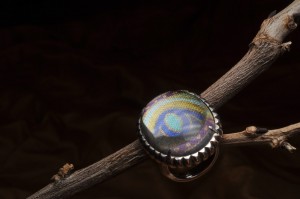
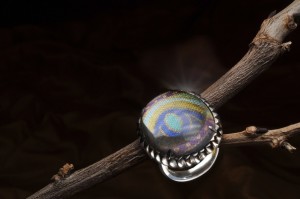
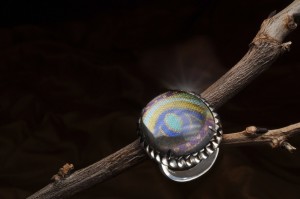
I was told by the jeweler that he was looking for something very clean and that today’s favorite style has grown up out of the CAD design printouts popular in Jewelry making today. I looked at some samples and they did indeed look more like drawings than photography but undeterred I thought it would be fun to see what I could do.
In days gone by, when photography was still film based and retouching an expensive add. It would have only been used for the most expensive adverts good jewelry photography and was all about controlling the light so that no reflections could be seen in any surfaces.
The technique required normally building a light tent around the ring and allowing soft light to illuminate all the surfaces as evenly as possible. The white light tent reflecting back in most directions a smooth white reflection with the occasional hot spot where a light might reflect.
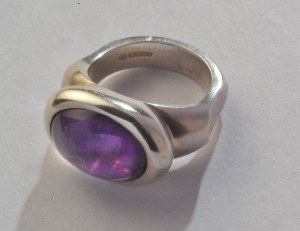
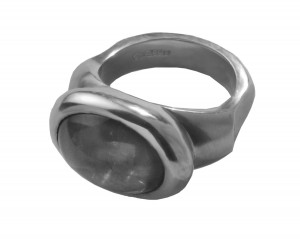
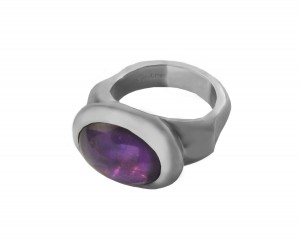
Jewels had to be backlit to make them shine and if this wasn’t possible then a small reflective surface had to be added behind the jewel to get the best light shining through it. Sometimes a good photographer might have used a multiple exposure technique with the added cost of duping to combine the images.
Of course today with digital photography combining different pictures is a relative walk in the park. So with my light brush I decided the first option would be to shoot each ring with enough shots to get a a clean white light coming from every angle possible so that I had at least one picture with each face nicely lit, then post production work I could combine all the best faces to produce something that would actually be physically impossible to light in one shot.
The photography was relatively straight forward, once the still life was set up a multitude of shots and exposures got every surface recorded in a clean reflective fashion.
It was when I got to the computer and looked at my results that the problems became apparent. Any custom made jewelry has polish marks and defects that show up extremely well under close inspection. It was obvious that the desired end result would need a lot of computer generated input.
Smoothing reflections, blowing in colour, reducing colour to black and white to remove any hint of a colour tint in silver areas are all techniques that can be employed to produce the desired end result.
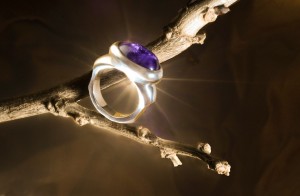
After combining about six images and adding a plethora of computer techniques I produced results I liked. But on going back to the Jeweler I discovered that I hadn’t gone nearly far enough and that reality had to be sacrificed to the computer to produce an effect that to me looks quite unreal. But this is the preferred style, and like everything else that comes in to fashion no doubt it will change in future.
It was an interesting challenge, and great to get back to doing a bit of still life after getting commissions more and more in the people line. Good photography in the past was as much about understanding good lighting as catching the moment. Today however it seems it’s that plus the ability to do anything required to make it something else completely via the computer!
Brian Russell
Copyright September 2014.